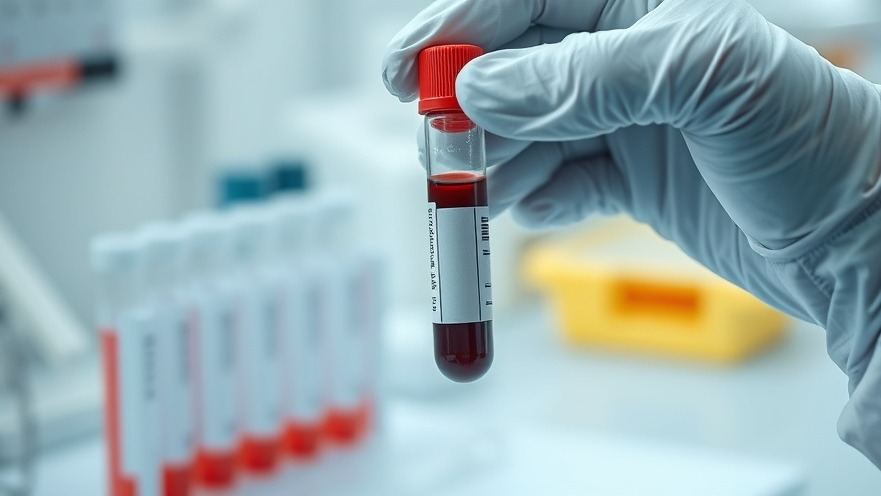
Rethinking Diagnostic Medicine: The Limits of Minimal Samples
The world of medical diagnostics is continually evolving, promising groundbreaking advancements that can significantly impact patient care. Yet, the case of Theranos, once heralded as a game-changer for blood tests, serves as a cautionary tale. It underscores the need for skepticism regarding claims of revolutionary technologies that promise to deliver accurate diagnoses with just a few drops of blood, saliva, or urine.
Lessons Learned from Theranos: A Cautionary Tale
The rise and fall of Theranos is a striking reminder of the pitfalls that can accompany rapid advancements in healthcare technology. Theranos, founded by Elizabeth Holmes, positioned itself as a pioneer of a blood-testing revolution, claiming to perform a multitude of tests with small volumes. The promise of accessible diagnostics generated immense investor interest, leading to a valuation exceeding $9 billion earlier in 2015. However, revelations about its deception when using traditional testing methods struck a significant blow against trust in health tech startups.
Modern Innovation: Weighing Promises Against Reality
In light of Theranos' failure, new ventures, such as Haemanthus, are now stepping forward with similar claims. Co-founded by Holmes' former partner Billy Evans, Haemanthus asserts it can utilize tiny amounts of bodily fluids to diagnose diseases. While advancements in healthcare technology could potentially make diagnostic procedures less invasive and more efficient, the practicality and reliability of such innovations must be scrutinized.
Understanding the Complexity of Diagnostic Tests
It's essential to recognize the complexity inherent in diagnostic testing. Blood tests, which typically require multiple milliliters collected from a vein, have been the gold standard for many medical decisions. They provide critical insights into various health conditions, such as infections, organ function, and chronic diseases like diabetes and hypertension. The precision of these tests stems from the volume of data derived from a sample, showing that smaller volumes may limit diagnostic power.
The Role of Urine and Saliva in Diagnostics
Similarly, while urine and saliva tests play a role in diagnostics, their effectiveness is also contingent on sample volume. Urinalysis is non-invasive, allowing for the detection of conditions such as urinary tract infections, kidney disorders, or metabolic syndromes. Saliva tests, though emerging as an option for specific diagnostics (like hormone levels), often cannot replace the breadth of information provided by blood analyses.
Diverse Perspectives on Diagnostic Innovations
While the excitement surrounding new diagnostic technologies is palpable, healthcare practitioners and patients alike must maintain a degree of skepticism. There is a delicate balance between innovation and the fundamental reliability of established methods. Engaging with both historical failures and current advancements can lead to more informed healthcare decisions.
Exploring Future Trends in Patient Diagnostics
As healthcare technology progresses, we expect new methodologies in diagnostics that promise to enhance patient experiences. However, incorporating these innovations responsibly requires collaboration between technologists and clinical practitioners to ensure that new technologies meet stringent reliability standards. Expect to see a gradual integration of digital solutions that combine patient data with traditional methods to reimagine the diagnostic landscape.
Building Trust in Health Technology
Ultimately, as concierge health practitioners seeking to stay ahead, awareness of technological advancements and the related implications is crucial. This includes understanding the limitations inherent in new diagnostic promises, advocating for evidence-based practices, and prioritizing transparency when discussing new technologies with patients. Building trust requires both caution and enthusiasm toward innovation.
As we navigate this evolving landscape, it's crucial for healthcare practitioners to remain informed and engaged with emerging technologies while critically evaluating their claims. By integrating rigorous analysis with practical insights into diagnostics, we're better prepared to serve our patients with the highest possible standard of care.
Call to Action
For practitioners wanting to keep abreast of groundbreaking health technology trends impacting patient care, engaging in ongoing education and exploration of these innovations is essential. Stay informed and ensure that you can confidently navigate the complexities of modern diagnostics.
 Add Row
Add Row  Add
Add 




Write A Comment